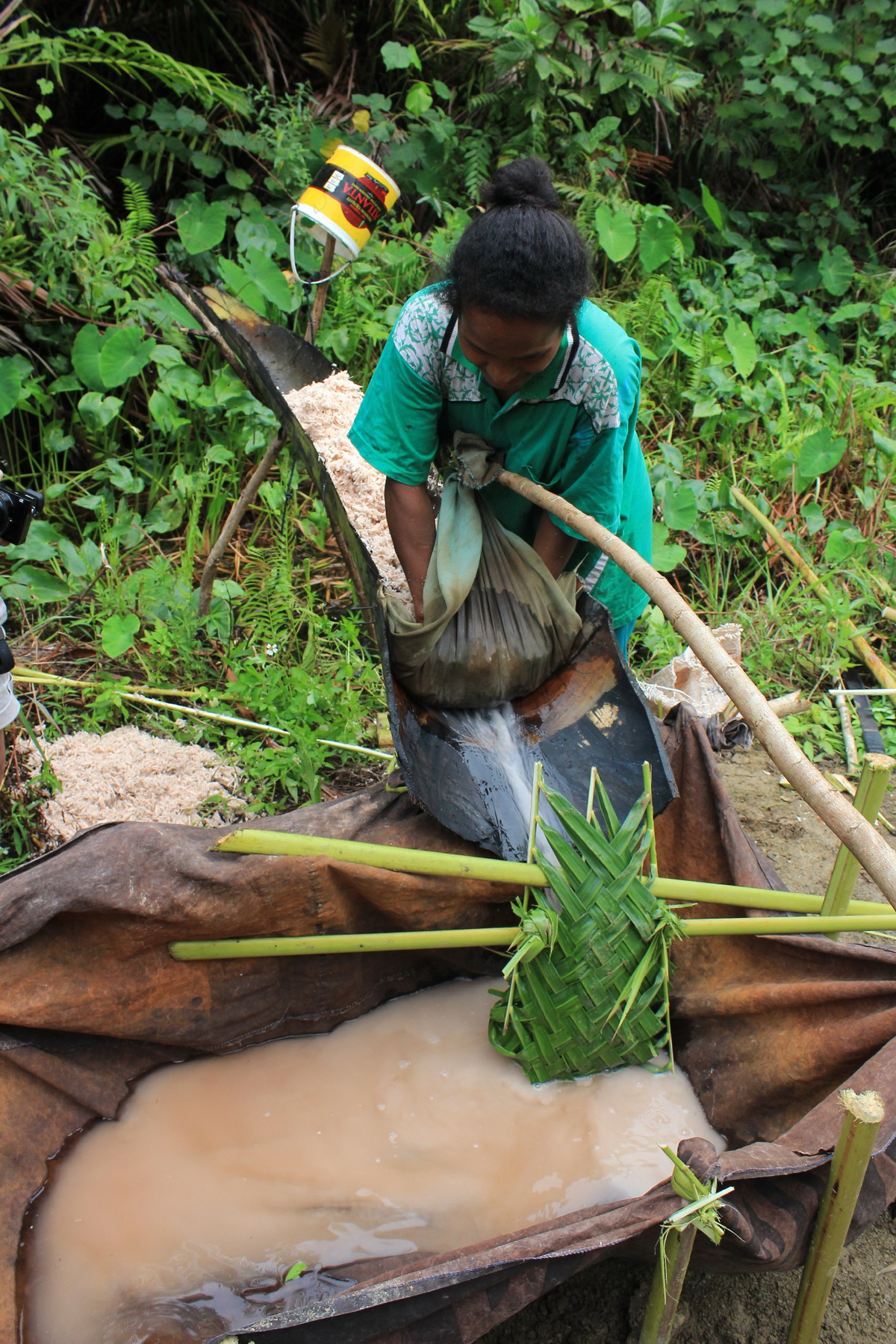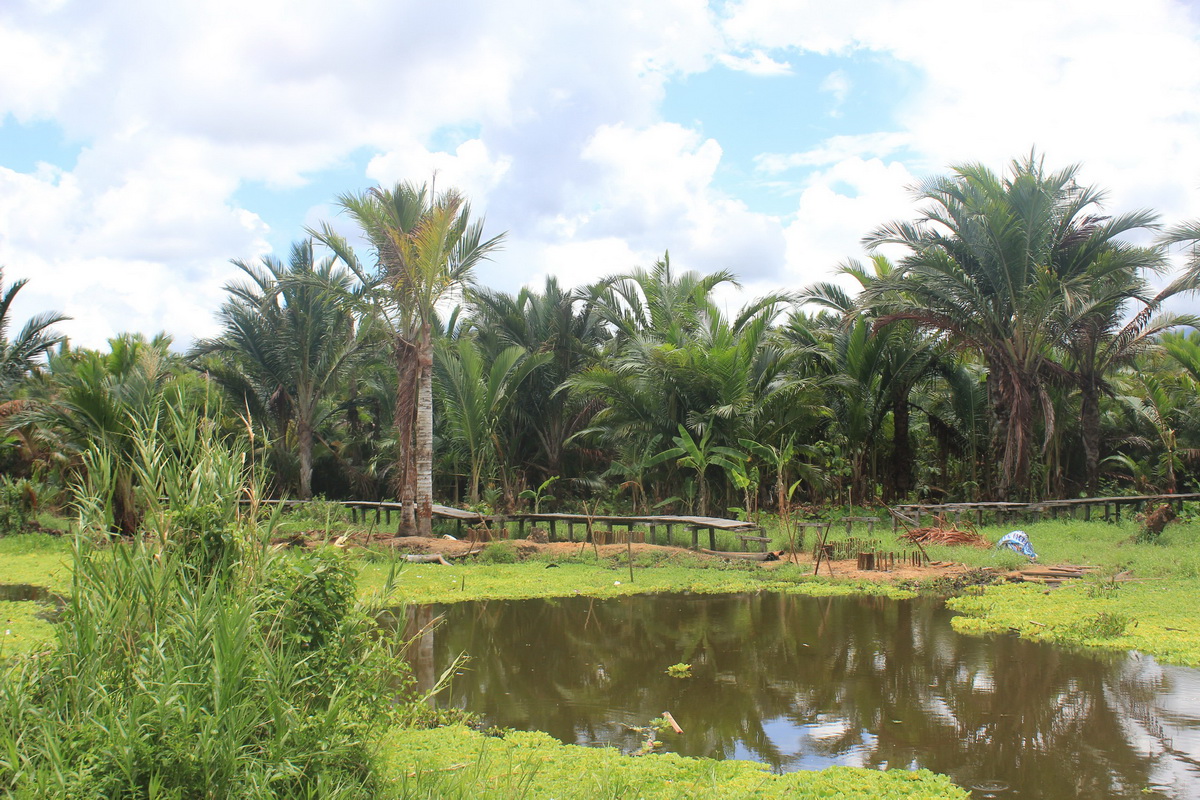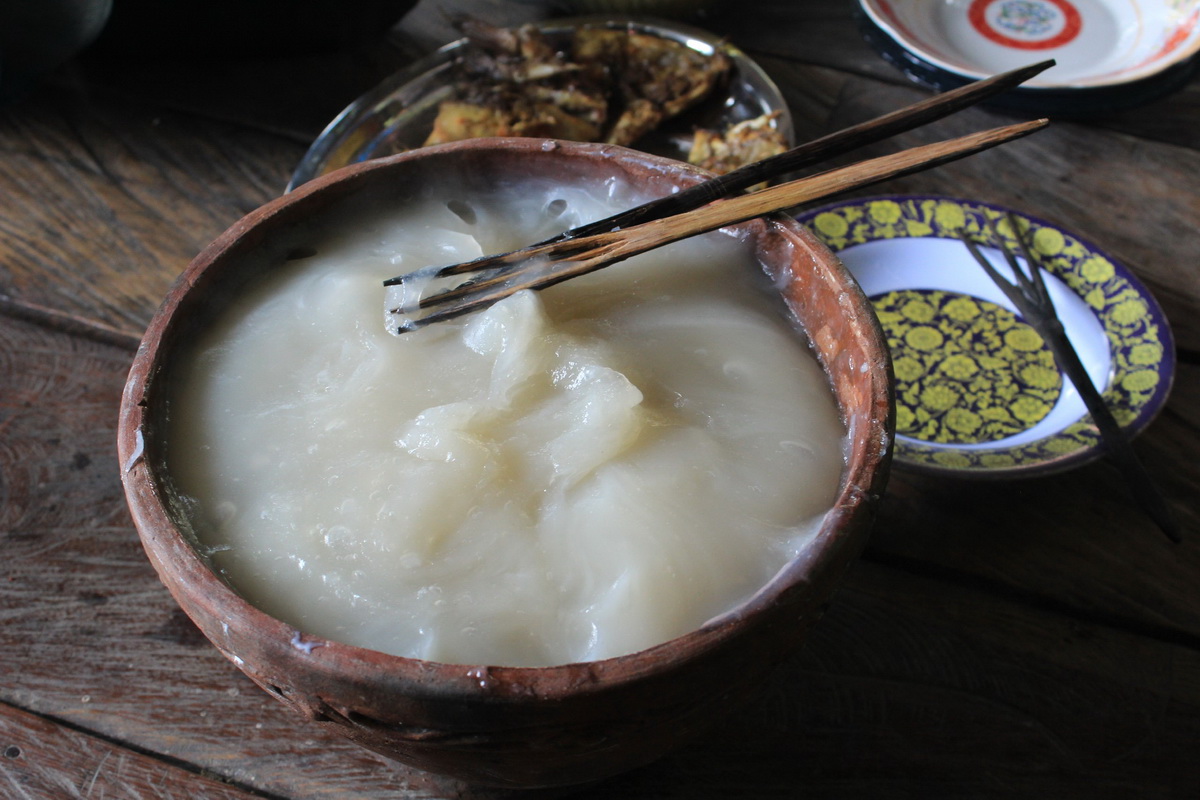Observing the Central Kalimantan Governor Candidates’ Partiality for the Environment
By Dimas N. HartonoSentani Sago: From Sustenance to Dowry

There isn’t a day that goes by in the communities around Lake Sentani that papeda – made from sago starch – isn't on the menu. But sago plants are more than just food for these people. They also harbor a sense of identity, tribal land divisions, environmental protection, and matrimonial culture. Local wisdom about sago has been passed down from generation to generation. Now, it seems to be on the decline.
Residents of Yoboy Village in the Sentani district of Papua have their own way of transferring papeda dough from a sempe (clay bowl) to a plate. Women usually pick up papeda with one hiloi, a bamboo fork that is then spun with one hand. Men, however, usually pick up papeda with two hiloi, one in each hand. Of course it’s easier to pick up the thick papeda dough with two hiloi.
“If you cannot spin papeda like me, you are surely not a Sentani woman," said Debora Wally-Tokoro, a resident of Yoboy, while picking up papeda with one hiloi, twirling it effortlessly, and pouring it on a dinner plate.
While picking up a new papeda roll for the next plate, “Mama Debora” talked about how the Yoboy people have depended on sago for generations. In Yoboy, it is customary for a husband to tokok (chop down) a sago tree when his wife is six months pregnant. This is believed to guarantee plenty of food once the baby is born. With proper storage, sago starch can keep for months.
Likewise, in the three-month period between tokok and birth, the remaining sago stems rot and attract sago worms, a source of protein for mothers after childbirth.
“That is still often done. Though people can tokok sago at any time for daily sustenance. That is why the plants on the edges of the village are increasingly rare, " Debora said.
On the outskirts of Lake Sentani, Yoboy Village has a stretch of peat soil ideal for growing sago trees. Local residents are not so familiar with the term ‘peatland’. They know peat as ‘soil’ or ‘living sludge’.
Yoboy residents call the area where sago is grown their 'hamlet'. Each tribe has its own hamlet, as dictated by custom. There are five tribes in Yoboy: Tokoro, Wally, Yom, Sokoy, and Depondoye.
Each tribe is only allowed to chop down sago in their hamlet. Chopping down sago plants that belong to other tribes is only permissible if a kinship has been forged between the tribes through marriage. For example, someone from the Tokoro tribe may request permission to chop down the Wally family sago, because a Wally has married a Tokoro.
In addition to the totok tradition, sago plants also play an important role for couples from different families who wish to build a household. The variety sago duri, scientifically known as Matroxylon rumphii, is considered important in this role. As the name suggests, this variant of sago has thorns on its stem. Practically speaking, then, chopping down sago duri is more difficult than other varieties of sago, and requires more people.
In the local language, sago duri is called 'para'.
“If you want to tokok the sago para, you must ask for permission from the chief. We tokok sago for girls,” said Naftali Felle, head of the Felle tribe in Atabar Village, Ebungfaw.
Atabar or Abar Village also lies on the outskirts of Lake Sentani in Papua. Although they’re in different districts, Yoboy and Abar are only a 20-minute boat ride apart. Like Yoboy, Abar is skirted by peatland areas along the lake, where sago plants thrive.
According to Naftali, if a girl from her village would marry someone from outside the village, then her family would chop down a para sago tree. The starch from the sago will become the girl's dowry to her in-laws. They use the sago para, because this variant usually produces more starch than other variants like sago yepha or folo. More starch means more papeda to serve to the new family.
The amount of starch produced varies between sago plants. A 20-meter sago tree can produce up to 1 ton of starch, while a smaller plant may yield 200–300 grams.
“Sago is very important to us, though we also eat rice so we don't get bored with papeda. Living soil [peatland] must be maintained so that the sago grows well," said Naftali.
Like Yoboy, five tribes inhabit Abar: Felle, Doyapo Bakeho, Ebalkoi, Wally, and Doyapo Punggauw. They live side by side and remind each other to heed local wisdom about chopping down sago.
“Tokok sago must be performed near the base of the tree, so that sago seedlings will grow again later," said Naftali, closing the story.






